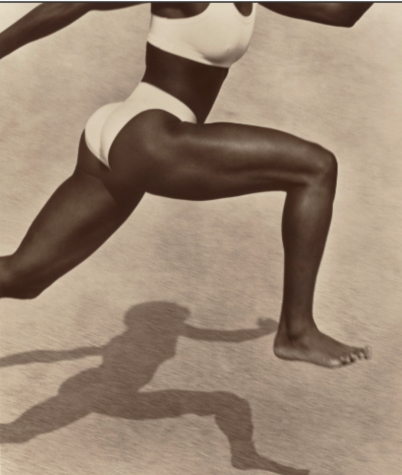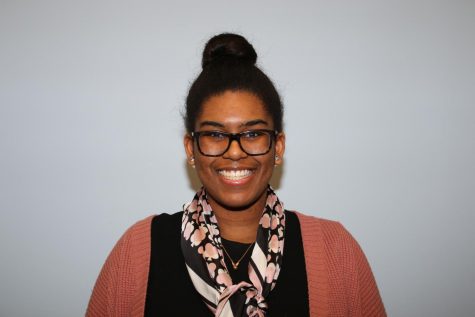CMA’s PROOF exhibit lacks diversity and inclusion
May 4, 2020
“A picture’s worth a thousand words, but what’s a proof worth?” you wonder, as you walk through the Cleveland Museum of Art’s (CMA) most recent exhibit, “PROOF: Photography in the Era of the Contact Sheet,” portions of which can now be found on CMA’s website.
When you first arrive at the entrance of the exhibit, you’re greeted by a larger-than-life, black-and-white proof of Miles Davis’ hand holding his famed trumpet. Although it seems like this could potentially be the start of a diverse walk through a new exhibit, you quickly realize just how much this walk through American history via “PROOF” is starkly white and catered to the upper-middle-class demographic.
Now, I know what some of you may be thinking. “Why does everything that we do have to be about race? Why can’t you just go through the exhibit and enjoy the different proofs like everybody else?”
While it must be nice to be able to walk through the rooms housing the exhibit and appreciate art at face value, for many of people of color, walking through this showing provided a reminder that, like in many instances in American history, the stories and voices of people of color aren’t as equally represented as those of their white counterparts.
From an objective point of view, the exhibit is very well put-together and features a wide range of both everyday people and superstars that became famous during the 20th century. But besides Miles Davis’ opening proof in the front of the exhibition hall, the representation of people of color can be counted on just one hand.
When you walk through the “Fame” section of the exhibit, in proof after proof you see Cher, Audrey Hepburn, Tennessee Williams and Gore Vidal. There’s even an entire section dedicated to Marilyn Monroe, essentially showing who she was throughout all parts of her career, from her early “girl next door” way of living up until a month before she died. The audience really gets to learn about who she was through these prints.
But where were the photos of Pearl Bailey, Ethel Waters or Ruby Dee? Weren’t they famous during that same era, too? Shouldn’t their proofs hang proudly in the exhibit?
As you continue to walk through the exhibit, you will reach the “Fashion + Glamour” section. In the era of the contact sheet, “photographs were a powerful force in defining ideals of elegance and beauty,” at least, according to the plaque that welcomes you into this section. You walk past sheet upon sheet filled with white models, actors and actresses, until your eyes finally land on one of the few African American faces in the entire show. Former Olympic gold medalist Jackie Joyner-Kersee is seen posing in a white leotard against a white background in proofs taken by the famed photographer Herb Ritts.
In the majority of her proofs, she is either covering her face with her hands, or with a shot put ball as a prop. The contact sheet is covered in bright orange grease pencil noting what features should be highlighted and which proofs shouldn’t be used. Interestingly enough, out of all the proofs that get marked with different annotations and notes, none of the proofs displayed in the exhibition ended up getting picked as the final photo that was eventually used in Vogue’s April 1988 issue.

It could be argued that in Ritt’s final selection of the photo he wanted to use, he discredits Joyner-Kersee in many ways due to her identity being hidden in the final shot. The final cut only shows her muscular body as she’s running barefoot on an open track. If one didn’t know the context of the photo, it could be perceived to be just any African American woman, when in fact, Joyner-Kersee has many accolades, including six Olympic medals, among others.
Additionally, showing only one person of color throughout the entire “Fashion + Glamour” section raises a lot of questions about what society deems as being beautiful and worth admiring. Honestly, how many pictures of Monroe and Woody Allen does one need to let the public know that society deemed them important and worth our attention?
Granted, Joyner-Kersee isn’t the only African American that is shown throughout the “PROOF” exhibit. She is joined by Muhammad Ali, in his underwater photoshoot taken by Flip Schulke and the few African Americans that were included in Robert Frank’s “The Americans.” Disappointment—but not surprise—begins to be a familiar feeling you have as you walk past even more proofs of Allen.
To be clear, the “PROOF” exhibit had no problem showing Allen, an accused sexual offender, in multiple different settings on the walls of the Kelvin and Eleanor Smith Foundation Exhibition Hall.
Yet, they couldn’t find space in their collection to show more people of color. White celebrities are nearly immortal in the sense that they almost never seem to lose their luster, even when they commit heinous crimes.
As you finish your walk through “PROOF,” you’re left with a feeling of emptiness. On the one hand, the exhibit gives the viewer a glimpse of what it was like in the mid-20th century, when so many things were happening and changing throughout the country. It’s a behind-the-scenes look at some of the most famous photographs that have been lost to the public for decades. However, it also serves as a blunt reminder that it wasn’t really until the turn of the last century that issues of diversity and inclusion came to the forefront of people’s minds.
One cannot necessarily blame Mark Schwartz and Bettina Katz, who donated roughly 180 of the proofs to the museum to share with the public. They had their specific tastes in art and they donated what they could and had. However, CMA did choose to build an entire collection out of just those proofs. It must have crossed their minds once or twice that the exhibition was a bit lacking in the diversity and inclusion department. Could they not have reached out to other collectors or photographers from that era to collect more contact sheets to put on display?
The public may never know what and how the collection was curated and came to be in front of our eyes. However, the current display on show is proof that there’s still a specific audience in mind when it comes to curating and showing art to the public here in Cleveland. I hope that moving forward, when CMA chooses to put on an exhibit, they think with a broader mindset, and recognize that art is for everyone, not just for the white upper-middle-class demographic.


